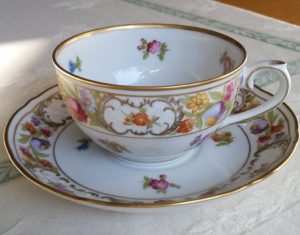 New research published in The Lancet estimates that lead exposure results in about 400,000 deaths every year in the USA - which includes about 250,000 deaths from cardiovascular disease. The study looked at "historical exposure" to lead, which means they looked at a person's lead exposure years ago (which could have been from many sources, such as breathing lead contaminated dust, drinking water from leaded pipes, from lead paint, leaded gas, or eating from cans that have been soldered with lead). What was noteworthy in this study following over 14,000 adults was that there were increased death rates even from low lead blood levels (concentrations of lead in blood lower than 5 μg/dL).
New research published in The Lancet estimates that lead exposure results in about 400,000 deaths every year in the USA - which includes about 250,000 deaths from cardiovascular disease. The study looked at "historical exposure" to lead, which means they looked at a person's lead exposure years ago (which could have been from many sources, such as breathing lead contaminated dust, drinking water from leaded pipes, from lead paint, leaded gas, or eating from cans that have been soldered with lead). What was noteworthy in this study following over 14,000 adults was that there were increased death rates even from low lead blood levels (concentrations of lead in blood lower than 5 μg/dL).
Lead exposure has been declining since the 1970s after lead was eliminated (banned) from paint and gasoline, but this study looked at adults born in the years when lead exposure was higher during childhood and adulthood. Baseline data (blood lead levels) was collected between 1988 and 1994 and then individuals were followed for the next 2 decades. The researchers found that there was a dose response curve - the higher the blood lead level, the higher the death rate from any cause (all-cause mortality), from cardiovascular disease, and from ischaemic heart disease in the next two decades.
Lead is a naturally occurring heavy metal, but it's also a poisonous substance for humans, and accumulates in teeth and bones. Lead can pass through the blood-brain barrier in children and fetuses and kill brain cells (and cause neurological damage). Lead can enter blood vessels and harm the endothelial cells that line the blood vessels. This process hardens arteries and causes plaque to form in blood vessels, increasing blood pressure, and the risk of heart disease and stroke. Lead can damage the kidneys, which play an important role in regulating blood pressure, and so increase a person’s risk of heart disease and stroke.
The Centers for Disease Control and Prevention (CDC) have stated that there are no safe blood levels of lead for children (zero is best), and the researchers of this study believe the same is true for adults. From Science Daily:
New estimates suggest that 256,000 premature deaths from cardiovascular disease -- including 185,000 deaths from ischemic heart disease -- in the USA may be linked to historical lead exposure in middle-aged and older adults (people currently aged 44 years or over), according to an observational study following 14,300 people for almost 20 years, published in The Lancet Public Health journal. ...continue reading "Even Low Level Lead Exposure Is Linked to Later Health Problems"

 The following
The following